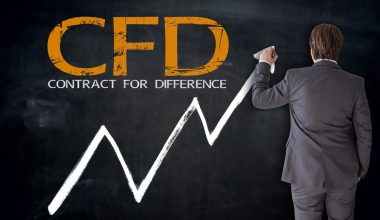A skewed distribution is when data in a chart leans either to the left or right side of the scale, resulting in a nonsymmetrical curve. This occurs in different statistical data sets, including frequency distributions. A skew distribution can be positively or negatively skewed. Any distribution with its left side shaped differently than its right side is a skewed distribution. The difference between a skewed distribution and a normal distribution, also called a Gaussian distribution, is that the latter symmetrically distributes around the mean and has a skew of zero.
Generally, the degree of skewness in a data set can be used as a criterion for evaluation in a variety of contexts, such as the following:
- Data is skewed in one direction if the skewness value is either less than minus 1 or greater than 1.
- A skewness value between -0.5 and 0.5 indicates relatively symmetrical data.
- Data with a skewness between -1 and -0.5 or 0.5 and +1 is considerably skewed in either direction.
Skewness And Its Uses
The standard deviation is widely used by investors as a tool for making predictions about future returns, although this statistic depends on the returns following a normal distribution. Since very few return distributions are normally distributed, skewness is a better way to predict performance because it is more accurate.
When investors look at a return distribution, they take skewness into account. This is similar to how kurtosis takes outliers into account when looking at a set of data. Since they are less likely to keep a position long enough to be convinced that the average will work itself out, short- and medium-term investors especially need to consider extremes.
Skewness is more likely to happen if a data point with a high skewness comes from a skewed distribution. Many economic models that try to predict how an asset will do in the future assume that the asset’s distribution will follow the normal distribution, in which the mean and the median are the same. If the data is skewed, this model will always produce underestimations of skewness risk. There is a direct link between how much the data is wrong and how well this economic model works.
Measuring the distribution of values around the mean can tell you if the chart skews and the direction of its skewness, so defining and determining skewness in terms of the distribution’s mean to the left is usually the best approach to do so. Also, if the median is on the right, the distribution is not always skewed.
Formula For Skew
Below is the formula for measuring skew;
Skewness = ∑Ni (Xi – X)3 / (N-1) * σ3
Xi = ith Random Variable
X = Mean of the Distribution
N = Number of Variables in the Distribution
Ơ = Standard Distribution
It’s possible to measure skewness in a number of ways. However, the first and second skewness coefficients developed by Pearson are the most frequently used formulas. Pearson’s first coefficient of skewness, which is also called Pearson mode skewness, is found by subtracting the mode from the mean and dividing the result by the standard deviation. When calculating Pearson’s second coefficient of skewness, also known as Pearson median skewness, we take the median, remove the mean, multiply the difference by 3, and then divide the product by the standard deviation.
Pearson’s second coefficient can be helpful because it doesn’t rely on mode to find the central tendency. This makes it a good choice when the data have a weak mode or several weak modes.
What Causes Skewness?
When skewness is present in a set of data, it just means that there are more events in one range than in another. The variation in the data sets often results in this. So, skewness is caused by the relationship between the data points and how often they show up.
Is Skewness Normal?
Yes, it is. Skewness is something that often comes up when analyzing data. In some cases, skewness is part of the data collection itself.
What Is a Left-Skewed Distribution?
The left-skewed distribution is also known as a negatively skewed distribution. In a left-skewed distribution, the tail of the figure extends more to the left than it does to the right. Most of the time, you don’t look at where the highest value is to figure out how the chart is spread out. Parts of a negatively skewed distribution are as follows:
- The tail of the graph is extended to the left.
- The center of the distribution is to theIn most charts, the left of the mean.
- The median tends to be located to the right of the mean in most charts.
What Is a Right-Skewed Distribution?
The right-skewed distribution is also known as a positively skewed distribution. When the chart’s tail is longer to the right and the peak shifts to the left, we have what’s known as a “right-skewed” distribution. The mean of a right-skewed distribution is typically situated to the right of the median; however, there are exceptions to this. In a normal distribution, the mean, median, and mode are all about in the middle of the data. In a right-skewed graph, it can be hard to find a typical value.
Why Is Right Skewd Distribution Common?
The chart’s bottom bounds are much lower than the rest of the chart’s data, which causes the entire chart to skew right, which is why right-skewed distributions are so common.
What Is a Skew-Normal Distribution?
A skew-normal distribution is a type of normal distribution that has an extra parameter that shifts the shape of the distribution to the left or right. Due to the fact that the only variable is the skew of the normal data, it has many of the same properties as the normal distribution.
- There is a single peak in the chart’s distribution.
- A real number line is used
- There is a non-zero skew value. The skew-normal distribution is transformed into a normal distribution if the value is zero.
- Since the chi-square statistic is often used to find correlations between categorical data, the square value of a random variable is a chi-square variable with one degree of independence.
- As the shape of the distribution changes over and over again, the distribution series tends to converge on a normal density function with a fold.
- The location parameter tells where the peak is, and the scale parameter tells how far apart the values are.
- The skew grows larger if the absolute value of the distribution’s general shape grows larger.
Positively Skewed Distribution
A positively skewed (or right-skewed) distribution is a form of distribution in statistics in which the bulk of the data lies closer to the middle of the distribution but the outlying values extend farther to the right.
It is also a form of distribution in statistics in which the bulk of the data lies closer to the middle of the distribution but the outlying values extend farther to the right. This type of distribution is also called a right-skewed distribution because the mean is usually to the right of the median.
Positively Skewed Distribution: Mean and Median
The mean is larger than the median in most positive skew distributions because the data is skewed to the lower side and the mean is the average of all values. The median, on the other hand, is the data’s midway value. As a result, if the data is skewed toward the lower end, the average will be greater than the median number.
What Causes Positively Skewed Distribution?
The root causes of a positively skewed distribution are traceable to a lot of factors, and some of these are as follows:
#1. Inequality in Distribution
Unequal distribution is the primary cause of a positively skewed distribution. People have varying levels of success in terms of financial success, academic success, family success, and so on. For instance, the grade of 50 students will differ, although they receive the same lectures and instructions. Personal studying and comprehension skills are two variables that greatly affect the performance of these students.
#2. Homogenous Groups
The same clustering may be seen in the positive distribution. In a positive income distribution, for example, a lot of people fall into the low- and medium-income brackets, which means that most people make about the same amount of money.
#3. Desirable Returns
In finance, if the returns are desirable, they are said to be positively distributed. The chances of profit are greater than the chances of loss in a positive distribution.
#4. Predictive Approach
This kind of organization also happens when predictive methods are used to put data into groups.
Negatively Skewed Distribution
A negatively skewed distribution is one in which more values are plotted on the right side of the graph than on the left. The left tail of the distribution is also longer, while the mean is lower than the median and mode. In most cases, it is zero or negative
Central Tendency of Negatively Skewed Distribution
The mean, median, and mode of the distribution are all examples of central tendency. When data is usually skewed, the mean, median, and mode are all the same. This shows that income and wealth are spread out evenly and that government programs and economic progress are good for money and economic growth.
For instance, a country has good conditions due to its favorably skewed distribution, since a huge portion of its population belongs to the same group and there are only a few populations that differ from the crowd. The mean is greater than the median, and the median is greater than the mode in this situation.
Whereas data in a negatively skewed distribution shows an unequal distribution, the central tendency is as follows:
Negatively Skewed Distribution in Finance
A skew distribution is used in finance to calculate the return on investment. As a result, skewed data indicates a lesser return on investment. Investors usually think it’s risky to put money into countries whose income is uneven because of long-term losses and currency fluctuations on the international market. On the other hand, investors who want to make money quickly can put their money in countries with negatively skewed distributions.
What Does It Mean When Something Is Skew?
When something is skewed, it is angled or shifted in an unnatural fashion. A perspective or visual frame might be distorted. Like many others, this term can be used to describe either concrete objects or abstract concepts. If an artwork hangs crookedly on the wall, it is skewed. A distorted viewpoint is another term for a biased one.
What Does Skewed Right Mean?
When the tail is more to the right, we say that the distribution is “skewed right.” One with a left-leaning tail is said to have a “skewed left” distribution. A histogram depicting a right-skewed distribution is shown above.
What Is Zero Skew?
A symmetrical distribution is one in which the skewness parameter is zero. This simply means the two sides are exact reflections of each other. Skewed distributions can be detected with relative ease by plotting the variable in question as a histogram. Here is an example of a histogram showing data, in this case, the weights of chicks at the age of six weeks.
Approximately, the distribution is symmetrical, with roughly equal numbers of observations falling on either side of the peak. As a result, the skewness of the distribution is close to zero.
Related Articles
- WHAT IS A CHANNEL? Types of Distribution Channels
- Risk Avoidance: Best Practices and all you should know with Examples
- What is Project Risk Management? Steps in Creating a Risk Assessment Plan
- Good Skateboard Brands: For Beginners And Pros 2023(Updated)
- BNA INCOME TAX PLANNER: Detailed Meaning and Guide
- T STATISTIC: Meaning, Example, Formular, and How to Calculate It
- MARKETING CHANNELS: Top 10 Digital Marketing Channels






